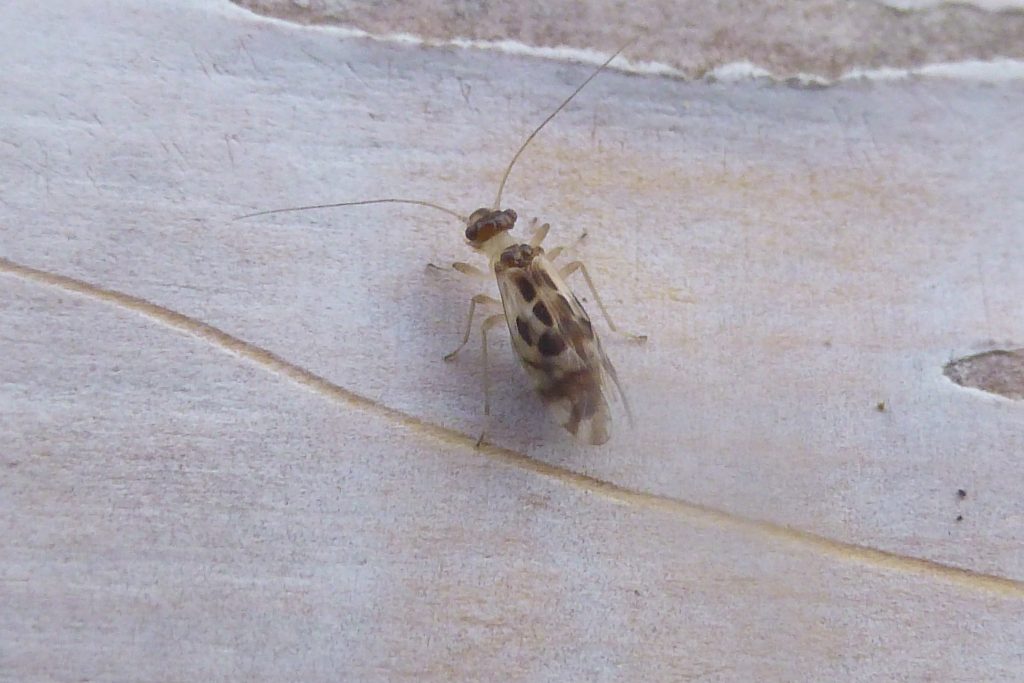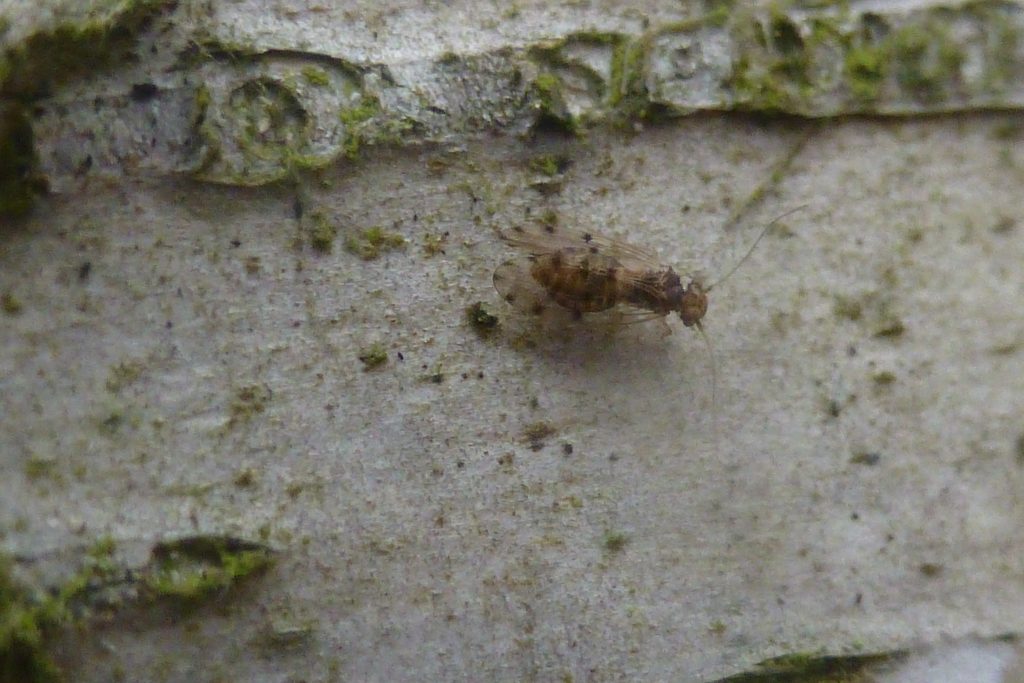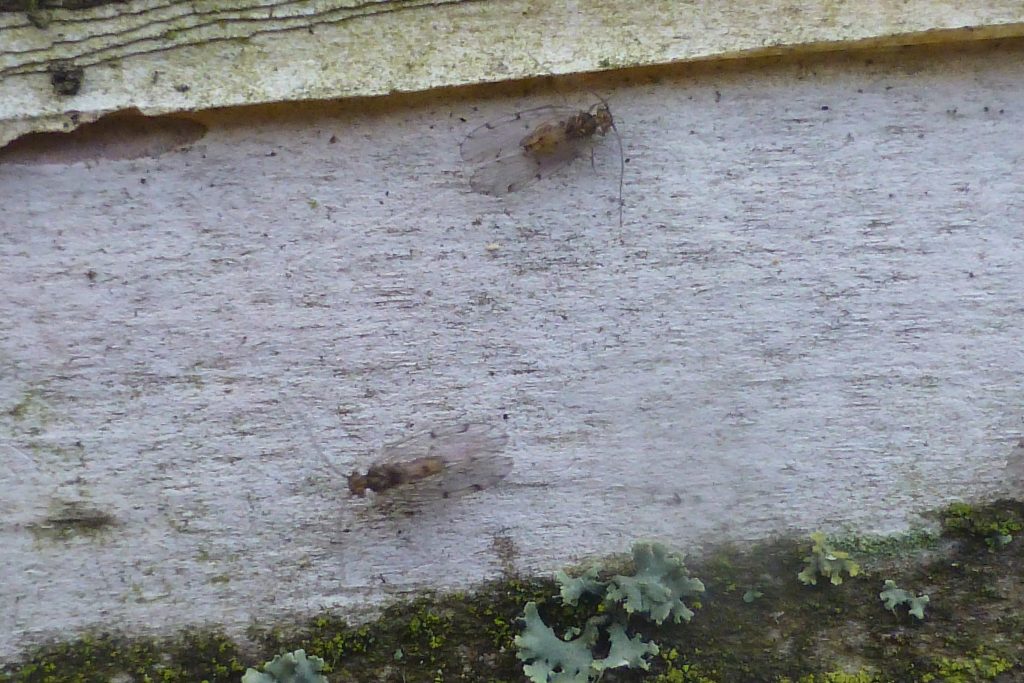Last month I was out on my usual lunchtime wildlife recording walk around RBGE and noticed some small insects on the bark of various species of birch. They were all barkflies (Psocoptera). One was a species I had previously seen, Ectopsocus briggsi. Another had very distinctively marked wings and was subsequently easily identified using the National Barkfly Recording Scheme website (http://www.brc.ac.uk/schemes/barkfly/homepage.htm) as Graphopsocus cruciatus, which was a new Garden record.
It was not until early December, when I was reviewing the photographs I had taken in order to compile the November Garden Wildlife Report for Botanics Stories, that I noticed that not all the barkflies I had thought were Ectopsocus briggsi were the same. Some had two dark marks on each side of each wing: these were E. briggsi. However, others had three marks per side of each wing: these turned out to be another species of Ectopsocus, Ectopsocus petersi. And another new Garden record! Since then I have seen Ectopsocus petersi on several more occasions, probably more often than E. briggsi. The two species can sometimes be seen together on birch trunks.
Psocoptera (barkflies and booklice) are one of the least well recorded insect groups, although one of the leading experts in the group, Bob Saville, lived and worked in the Edinburgh area until his death in 2010 so the Lothians have been particularly well recorded. Bob was responsible for setting up the National Barkfly Recording Scheme website that I consulted to make my identification. He also recorded a nationally scarce barkfly, Trichopsocus brincki, on Pinus strobus within the Royal Botanic Garden in 2007. That remained the only barkfly record for RBGE of which I was aware, until I made my own first barkfly record here in 2015, which was in fact Ectopsocus briggsi. Since then I have found and identified four more species. These are the already-mentioned Ectopsocus petersi and Graphopsocus cruciatus as well as Mesopsocus immunis and, most recently, Valenzuela burmeisteri which is one of December 2016’s new Garden records. I feel sure that plenty more species are awaiting discovery within the Garden. The order is quite a small one – about 100 British species, of which only 68 live outdoors (the barkflies) while the remainder live indoors and are called booklice. The indoor booklice can sometimes be pests. However, the outdoor barkflies are not pests and many of them are very delicate and attractively marked. So, next time you are out and about, why not have a look at your nearest trees – you are almost certain to find at least one barkfly species on them, particularly in late summer. However, some species, such as the six I have mentioned in this Botanics Story, can in my experience be found all year round.



